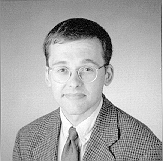| Summer School on Computational Materials Science |
2001
|
University of Illinois, Urbana-Champaign
|
|
Quantum Mechanics / Molecular Mechanics Methods |
 |
| Jan Jensen - jan-jensen@uiowa.edu - University of Iowa |
|
Outline of Lecture
|
|
Background Articles |
|
|
"The Effective Fragment Potential Method: A QM-based Approach to Modeling Environmental Effects in Chemistry", M. S. Gordon, M. A. Freitag, P. Bandyopadhyay, J. H. Jensen, V. Kairys, and W. J. Stevens, J. Phys. Chem. A 105 293-307 (2001). |
|
| "A mixed quantum mechanics/molecular mechanics (QM/MM) method for large-scale modeling of chemistry in protein environments", R. B. Murphy, D. M. Philipp, R. A. Friesner, J. Comp. Chem. 21 1442-1457 (2000). | |
| "Hybrid potentials for large molecular systems", P. Amara and M. J. Field, Computational Molecular Biology Series title: Theoretical Computational Chemistry (J. Leszczynski, Ed) vol 8. pg 1-33 (1999) (Amsterdam; New York: Elsevier). | |
|
Lecture 1 |
|
| Quantum Mechanics / Molecular Mechanics Methods | |
| Lecture Notes - (468 KB PDF) | |
| Last Updated July 19, 2001 |
Report errors to the webmaster
|